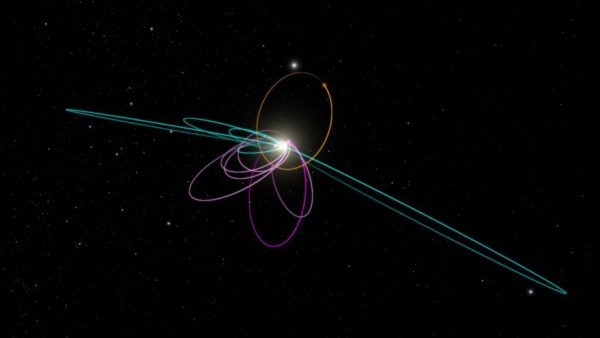“Finding out that something you have just discovered is considered all but impossible is one of the joys of science.” -Mike Brown
In January of last year, astronomers Konstantin Batygin and Mike Brown shocked the world by proposing that there was a world larger than Earth located some five-to-ten times as distant as Neptune. That this world — known as Planet Nine — was causing the ultra-distant Kuiper belt objects we'd discovered so far to all have predicable, peculiar properties. And the observations matched up really well.
 The 3D orbits of the Kuiper belt objects influenced by Planet Nine. As Mike Brown said, 'The distant objects with orbits perpendicular to the solar system were predicted by the Planet Nine hypothesis. And then found 5 minutes later.' Image credit: Mike Brown / http://www.findplanetnine.com/.
The 3D orbits of the Kuiper belt objects influenced by Planet Nine. As Mike Brown said, 'The distant objects with orbits perpendicular to the solar system were predicted by the Planet Nine hypothesis. And then found 5 minutes later.' Image credit: Mike Brown / http://www.findplanetnine.com/.
But in science, post-dictions aren't enough. You need to make new predictions for objects you can then go out and measure, and see how they line up. In the case of Planet Nine, there are four pieces of indirect evidence that can be measured, and one piece of direct evidence that will settle the issue once and for all: actually locating Planet Nine.


Great Article!
...just had a question: From my understanding, telescopes in general can only see what the human eye can see. Plus, the Earth's atmosphere negatively impacts viewing through telescopes (i.e., the main motivation to putting the Hubble in space). Is it possible that next generation optics will be able to provide a better view of that area of space, and thus provide more context to the evidence (or lack there of) of the existence of Planet Nine?
Information on the different planet is there on EARTHMEASURED